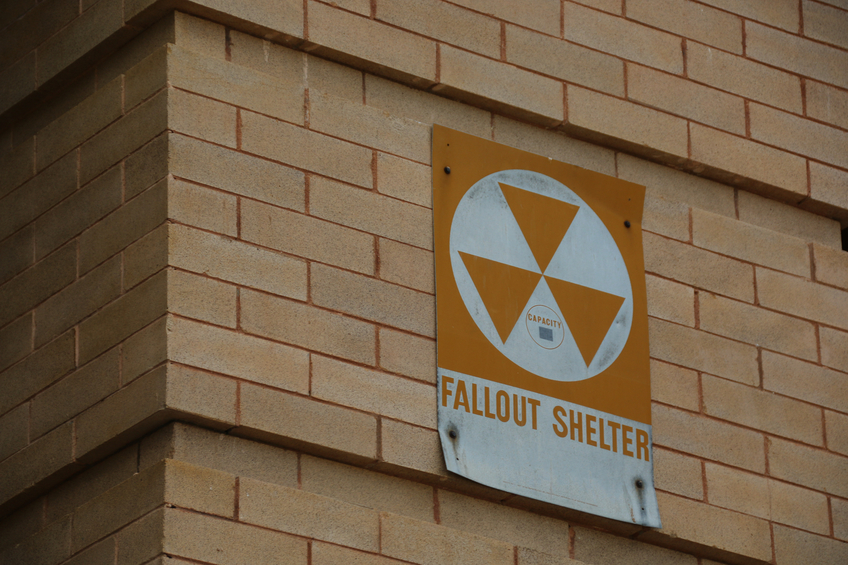Pennsylvania Construction Safety and Ethics 24 PDH Discount Package 3
Protecting Construction Workers in Confined Spaces (Y03-002)
Introduction to Radiation (Y03-004)
Safe Rooms and Shelters - CBR Threat Protection (F03-002)
Respirable Crystalline Silica Standard for Construction (C09-005)
Factors to Consider When Using Toxic Release Inventory Data (H01-003)
General Principles of Engineering Ethics (LE2-016)

This online engineering PDH course provides information on effective ergonomic interventions that help lower the physical demands of manual material handling (MMH) work.
Manual material handling work contributes to a large percentage of over half a million cases of musculoskeletal disorders reported annually in the United States. Musculoskeletal disorders often involve strains and sprains to the lower back, shoulders, and upper limbs. They can result in protracted pain, disability, medical treatment, and financial stress for those afflicted with them.
Effective ergonomic interventions can lower the physical demands of MMH work tasks, thereby lowering the incidence and severity of the musculoskeletal injuries they can cause. Their potential for reducing injury-related costs alone make ergonomic interventions a useful tool for improving a company’s productivity, product quality, and overall business competitiveness.
This 3 PDH online course is applicable to engineers, managers and supervisors who are interested in learning more about ergonomic interventions that reduce the physical demands of manual material handling work.
This PE continuing education course is intended to provide you with the following specific knowledge and skills:
- Familiarizing with the basics of manual material handling
- Understanding the importance of improving the workplace
- Understanding the conditions associated with the development of injuries in manual material handling tasks
- Learning about the different types of ergonomic improvements
- Knowing easier ways to manually lift, lower, fill, or empty containers
- Exploring alternatives to the manual handling of individual containers
Upon successful completion of the quiz, print your Certificate of Completion instantly. (Note: if you are paying by check or money order, you will be able to print it after we receive your payment.) For your convenience, we will also email it to you. Please note that you can log in to your account at any time to access and print your Certificate of Completion.

This online engineering PDH course provides guidance on the Confined Spaces standard that applies to construction work performed in confined spaces. It addresses the most common issues that employers face and provides sufficient detail to serve as a useful compliance guide.
A confined space is a space whose configuration and/or contents may present special dangers not found in normal work areas. Confined spaces may be poorly ventilated and, as a result, contain insufficient oxygen or hazardous levels of toxic gases. Working in a tight space can prevent a worker from keeping a safe distance from mechanical and electrical hazards in the space. Fumes from flammable liquids in a poorly ventilated area can reach explosive levels.
Such hazards endanger both the workers in the confined space and others who become exposed to the hazards when they attempt to rescue injured workers. Therefore, employers must evaluate all confined spaces in which their employees work to determine whether hazards exist and whether the work to be done has the potential to create such hazards in the future.
This 3 PDH online course is applicable to engineers, architects, managers and contractors whose duties involve work in confined spaces and are interested in learning about the proper approach to safety while working in compliance with the Confined Spaces standard.
This PE continuing education course is intended to provide you with the following specific knowledge and skills:
- Familiarizing with confined and permit spaces
- Gaining a general overview of the Confined Spaces standard’s requirements
- Learning about employer responsibilities and worker training
- Understanding the content of the permit space program
- Learning about the alternate procedures for certain permit spaces
- Understanding the responsibilities of entrants, attendants and entry supervisors
- Exploring different rescue and emergency services
Upon successful completion of the quiz, print your Certificate of Completion instantly. (Note: if you are paying by check or money order, you will be able to print it after we receive your payment.) For your convenience, we will also email it to you. Please note that you can log in to your account at any time to access and print your Certificate of Completion.

This online engineering PDH course provides an overview of the types of radiation, the health effects due to exposure and the way it is regulated.
Radiation has always been present and is all around us. Life has evolved in a world containing significant levels of ionizing radiation. We are also exposed to man-made radiation from sources such as medical treatments and activities involving radioactive material.
The health effects of radiation are well understood. Since the early 20th century, radiation’s effects have been studied in depth, in both the laboratory and among human populations. Because of the known health risks of radiation, it must be carefully used and strictly controlled. A balance must be struck between radiation’s societal benefits and the risks that radiation poses to people, health and the environment.
The Canadian Nuclear Safety Commission (CNSC) regulates the use of nuclear energy and materials to protect the health, safety and security of Canadians and the environment; and to implement Canada's international commitments on the peaceful use of nuclear energy. It also sets dose limits to prevent workers and the public from excessive radiation exposure.
This 3 PDH online course is applicable to safety engineers and professionals who are interested in learning more about nuclear safety.
This PE continuing education course is intended to provide you with the following specific knowledge and skills:
- Understanding the definitions of atoms, isotopes and radioisotopes
- Familiarizing with the types of radiation: non-ionizing and ionizing radiation
- Knowing the natural and man-made sources of ionizing radiation
- Understanding the health effects of radiation exposure and how it causes cancer
- Familiarizing with the epidemiological evidence of the effect of the radiation exposure
- Identifying the radiation dose limits and the typical radiation doses produced by natural and man-made sources
- Learning the types of radiation doses: absorbed, equivalent and effective dose
- Familiarizing with the rules regulating radiation
Upon successful completion of the quiz, print your Certificate of Completion instantly. (Note: if you are paying by check or money order, you will be able to print it after we receive your payment.) For your convenience, we will also email it to you. Please note that you can log in to your account at any time to access and print your Certificate of Completion.

This online engineering PDH course describes how to add chemical, biological and radiological (CBR) protection capabilities to a shelter or safe room. It also discusses air filtration, safe room criteria, design requirements, operations and maintenance, commissioning, and training required to operate a shelter or safe room.
A CBR safe room protects its occupants from outside contaminated air by providing clean, breathable air in two ways: (1) by trapping air inside the room and minimizing the air exchange (an unventilated safe room) and (2) by passing contaminated air through a filter to purify it as it is supplied to the room (a ventilated safe room).
This 3 PDH online course is applicable to engineers, planners, architects, landscape designers, construction and operations personnel, security and law enforcement agents, as well as consultants and contractors who are interested in gaining a better understanding in CBR threat protection of safe rooms and shelters.
This PE continuing education course is intended to provide you with the following specific knowledge and skills:
- Learning how air filtration affects protection of safe rooms
- Understanding the selection or design criteria for safe rooms
- Designing and installing toxic-agent safe rooms
- Operating and maintaining CBR shelters
- Commissioning a Class 1 CBR safe room
- Upgrading a CBR safe room
- Training on the use of a safe room
In this professional engineering PDH course, you need to review Chapter 3 "CBR Threat Protection" of the FEMA Publication tilted, "Safe Rooms and Shelters" (FEMA 453).
Upon successful completion of the quiz, print your Certificate of Completion instantly. (Note: if you are paying by check or money order, you will be able to print it after we receive your payment.) For your convenience, we will also email it to you. Please note that you can log in to your account at any time to access and print your Certificate of Completion.

This online engineering PDH course provides an overview of the Occupational Safety and Health Administration’s (OSHA) Respirable Crystalline Silica Standard for Construction.
Crystalline silica is a common mineral found in many naturally occurring and man-made materials used at construction sites. Materials like sand, concrete, brick, block, stone and mortar contain crystalline silica. Amorphous silica, such as silica gel, is not crystalline silica. Respirable crystalline silica – very small particles typically at least 100 times smaller than ordinary sand found on beaches or playgrounds – is generated by high-energy operations like cutting, sawing, grinding, drilling and crushing stone, rock, concrete, brick, block and mortar, or when abrasive blasting with sand.
Construction workers exposed to respirable crystalline silica are at increased risk of developing serious adverse health effects including silicosis, lung cancer, chronic obstructive pulmonary disease, and kidney disease. This course describes the steps that employers are required to take to protect employees in construction from the hazards associated with exposure to respirable crystalline silica. This course provides guidance only, and does not alter or determine compliance responsibilities, which are laid out in OSHA standards and the Occupational Safety and Health Act.
This 9 PDH online course is intended for safety and health engineers, construction workers and others looking to better understand OSHA’s Respirable Crystalline Silica standard for construction.
This PE continuing education course is intended to provide you with the following specific knowledge and skills:
- Gaining general information about respirable crystalline silica
- Familiarizing with the scope and definition of the standard
- Learning about the specified exposure control methods and the alternative exposure control methods
- Understanding several sections of the standard such as: respiratory protection, housekeeping, written exposure control plan, medical surveillance, communication of hazards, and recordkeeping
Upon successful completion of the quiz, print your Certificate of Completion instantly. (Note: if you are paying by check or money order, you will be able to print it after we receive your payment.) For your convenience, we will also email it to you. Please note that you can log in to your account at any time to access and print your Certificate of Completion.

This online engineering PDH course provides a comprehensive overview of the Toxics Release Inventory (TRI) data, focusing on its significance, application, and the critical factors to consider when analyzing this data.
This course highlights the role of the Environmental Protection Agency (EPA) in compiling and disseminating TRI data, which encompasses information about toxic chemicals managed by various facilities in the United States. It explores the data collection processes, the types of chemicals reported, and the regulatory framework governing these releases. This course delves into key factors that impact the interpretation of TRI data, such as the toxicity of chemicals, the routes of exposure, and the context of environmental regulations. It explores methodologies for analyzing releases, understanding waste management practices, and assessing potential risks associated with toxic chemicals in communities. By engaging with real-world examples and case studies, the course shows how TRI data can inform industry practices, regulatory measures, and public health considerations.
This 1 PDH online course is applicable to chemical and environmental engineers, as well as other technical professionals interested in learning more about factors to consider when using toxic release inventory data.
This PE continuing education course is intended to provide you with the following specific knowledge and skills:
- Understanding the purpose and significance of the Toxics Release Inventory (TRI) and its role in environmental protection and public health
- Learning how to analyze TRI data, including methodologies for interpreting toxic chemical releases and waste management practices
- Knowing the key factors that influence exposure and risk assessments related to toxic chemicals reported in TRI
- Familiarizing with the regulatory framework governing TRI reporting and the compliance requirements for facilities handling toxic substances
- Understanding the concept of source reduction and its importance in minimizing toxic releases in industrial operations
- Learning about the various tools and resources available for accessing and utilizing TRI data effectively in stakeholder decision-making
- Knowing how to evaluate industrial practices and community impacts associated with TRI-reported chemicals to inform public health initiatives
- Familiarizing with best practices for engaging with communities concerning TRI data and potential environmental concerns related to toxic releases
In this professional engineering CEU course, you need to review the course document titled, “Factors to Consider When Using Toxic Release Inventory Data”, which is based on the U.S. Environmental Protection Agency (EPA), Publication No. 260R19001, “Factors to Consider When Using Toxic Release Inventory Data”.
Upon successful completion of the quiz, print your Certificate of Completion instantly. (Note: if you are paying by check or money order, you will be able to print it after we receive your payment.) For your convenience, we will also email it to you. Please note that you can log in to your account at any time to access and print your Certificate of Completion.

This online engineering PDH course presents the principles of engineering ethics that every engineer is expected to live by when practicing their profession.
Engineering ethics is (1) the study of moral issues and decisions confronting individuals and organizations involved in engineering and (2) the study of related questions about moral conduct, character, ideals and relationships of peoples and organizations involved in technological development (Martin and Schinzinger, Ethics in Engineering).
This course describes the fundamental legal concepts with which very engineer should be familiar. It also presents unique disciplinary case studies selected from across the nation, as well as hypothetical ethical challenges that demonstrate how difficult it can be to apply the code of ethics for engineers.
This 2 PDH online course is applicable to all professional engineers who are either required to fulfill 2 PDH in engineering ethics or are interested in broadening their understanding of what it means to practice and uphold the honor and integrity of their engineering profession while holding the utmost safety, health, and welfare of the public.
This PE continuing education course is intended to provide you with the following specific knowledge and skills:
- Understanding the common definition of ethics regarding engineering
- Learning about the important principles of the engineer’s professional responsibility
- Learning the do’s and don’ts through several ethical and disciplinary cases
- Understanding what it means to practise and uphold the honor and integrity of the engineering profession
Upon successful completion of the quiz, print your Certificate of Completion instantly. (Note: if you are paying by check or money order, you will be able to print it after we receive your payment.) For your convenience, we will also email it to you. Please note that you can log in to your account at any time to access and print your Certificate of Completion.